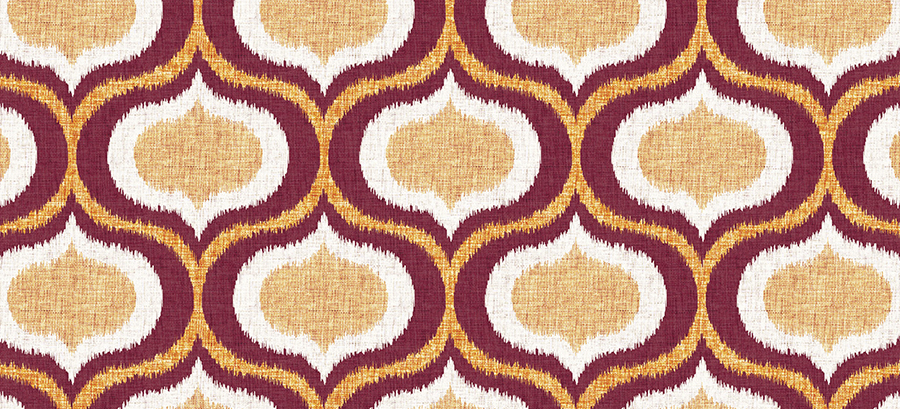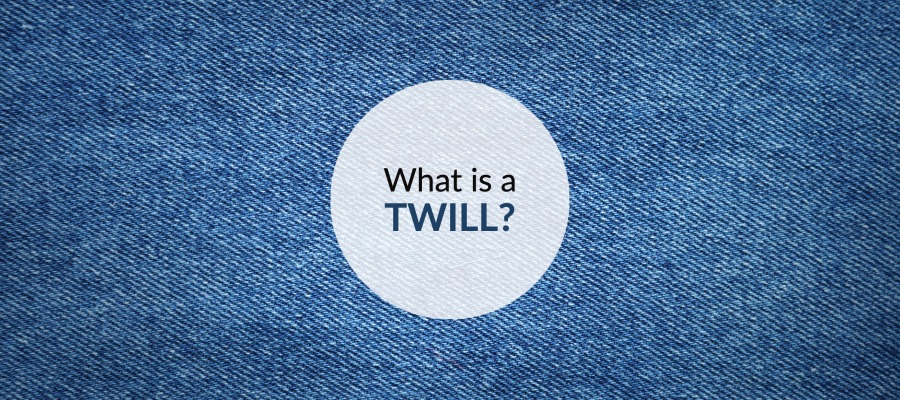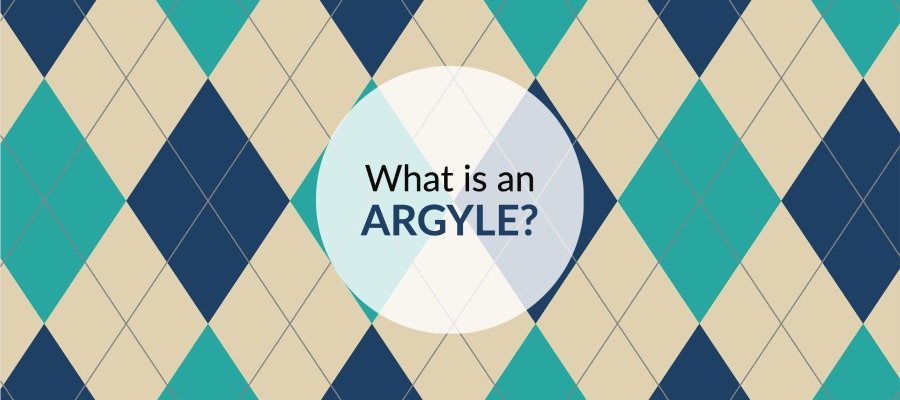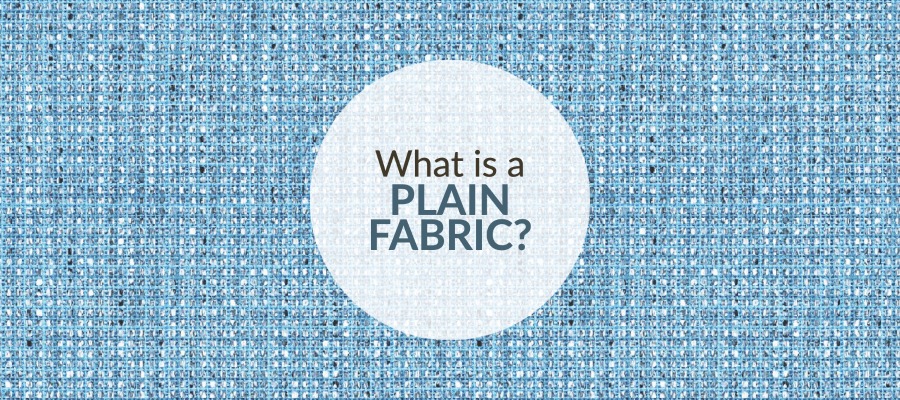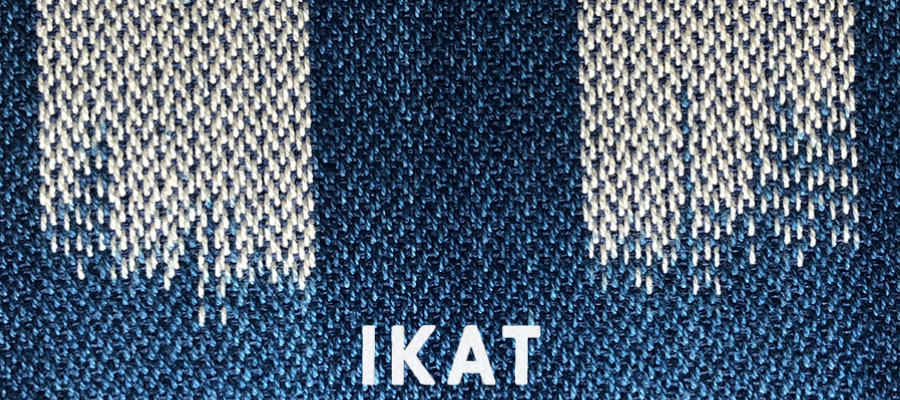
Ikat: Definition, History & Design
Ikat fabrics are beautiful, intriguing, and always in style. While other types of patterning come in and out of fashion, there is something about ikat that manages to always stay relevant. It’s nothing new. This has been the case around the world and throughout history.

What exactly is ikat?
Ikat (pronounced: E–cot) is a method for coloring fabric in patterns by resist dyeing. The pattern is not applied to the surface of a finished fabric, nor is it woven into the fabric structurally. Instead, parts of the yarns for the warp and/or weft are protected with a resist before dyeing. The dye then colors the yarn everywhere except under the binding. After dyeing, the bindings are removed and the pattern appears undyed on a colored ground. When dyeing is complete, the yarn is then woven into fabric, often in a relatively simple structure and at a density that highlights the warp.
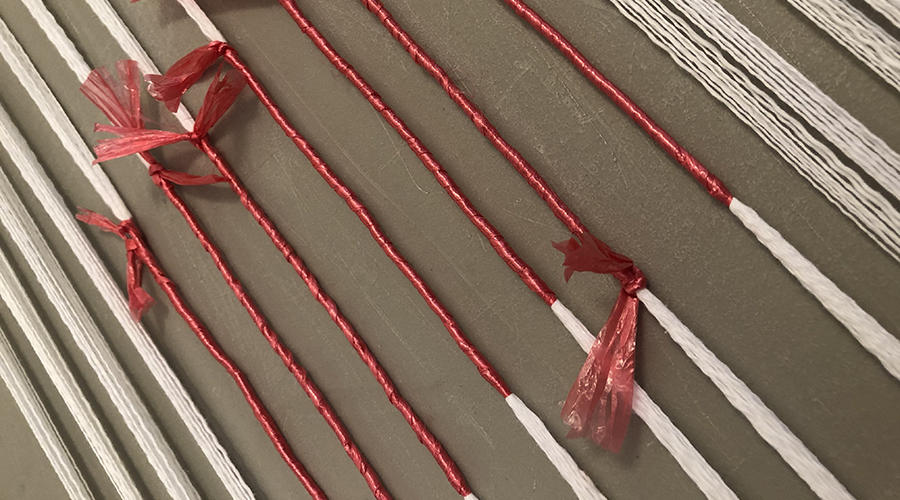
This is what makes ikat so interesting when compared to other types of shibori and resist dyeing. The pattern is made to the actual threads before being constructed into a fabric.
Ikat is usually described using terms that refer to which threads are dyed.
- Warp Ikat: where only the warp threads are bound. This is the most common.
- Weft Ikat: where only the weft threads are bound.
- Compound Ikat: where both the warp and weft threads are bound, but their designs are independent of each other.
- Double Ikat: where both the warp and weft threads are bound, but their designs work together to create the overall pattern. This technique is the most rare due to how complicated and difficult it is to create.
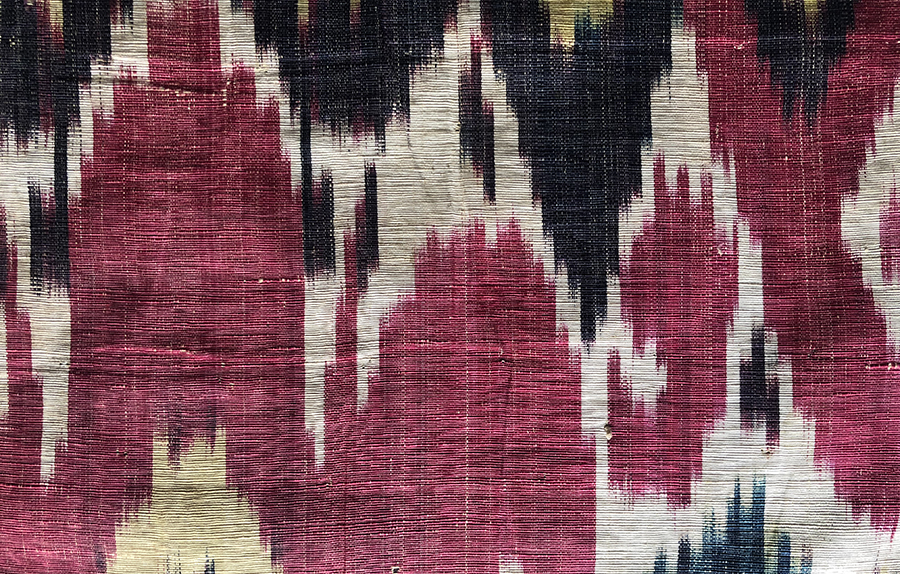
Ikat is often only two colors, the color of the yarn and the color of the dye. However, many are made with multiple colors, making the process that much more laborious because you need to bind and dye color 1, then color 2, then color 3. For example, in this fabric, the white is the color of the yarn. The designer would have bound the white areas first and then dyed the warp yellow. The warp would then be stretched again and the yellow areas bound, then dyed red. The process was repeated one more time for the darkest color.
All this dyeing is done before you even start weaving.
When the dyed warp is eventually put on the loom, there is a general shifting and relaxing of the yarns. While the undyed areas appear in a straight line when you remove the binding, they don’t stay that way forever. Inevitably, when the warp is put on the loom, there is a shifting. The edges move up and down slightly until the warp is tied on. This feathering edge is what makes these fabrics so unmistakable and instantly recognizable. Structurally, these fabrics are woven to highlight the patterning. They often have a dense sett (number of warp threads per inch) and are woven in a simple structure such as plain weave, rep weave, or satin.
Ikat fabrics are made around the world. While the basic technology of binding thread is a constant, particular techniques vary from region to region. How they stretch out the yarn for binding, transfer a design to the thread, and the materials they use for wrapping vary widely. Regardless of where they are made though, they are always highly prized. Ikat is laborious and highly skilled work. Therefore, they are considered very precious wherever they are made. In cultures around the world, they are often used for very special occasions, such as ceremonies or religious rituals.
What does it mean to be ikat-inspired?
Real ikat is often prohibitively expensive for many consumers but is an inspiration to designers. Yet, many textile designers are inspired by them and their feathered edges. They create designs with that feathered edge as a starting point, but ultimately produced in a less laborious technique. Jacquard weaving and print designs commonly translate this idea into beautiful patterns.
Now that you know how ikat is made, you are sure to see it with fresh eyes wherever you go. If you’re a weaver who likes to dye, give it a try and you will have a renewed appreciation for these beautiful fabrics. Do you want your own dose of inspiration? Check out the Guido Goldman Collection, one of the world’s most extensive collections. If you’re interested in ikat-inspired patterns for your next project, check “ikat” from the technique filter in our licensable library to see only those patterns.
References:
Ikat, by Lydia VanGelder
Ikat, Splendid Silks of Central Asia, The Guido Goldman Collection, by Kate Fitz Gibbon & Andrew Hale
Share this post
Author
DESIGN/COLOR TRENDS AND AWESOME INFORMATION IN YOUR INBOX
Sign up for our monthly trend letter





